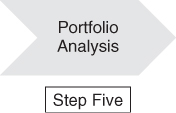Chapter 7
Portfolio Analysis
“It's a proprietary strategy. I can't go into it in great detail.”
Bernard Madoff
“It's not whether you're right or wrong that's important, but how much money you make when you're right and how much you lose when you're wrong.”
George Soros

Having completed our quantitative performance analysis on FCM, we need to take our due diligence to the next level by analyzing the fund's holdings. The quantitative analysis does a good job of presenting the fund manager's results while the portfolio analysis should help to better understand the drivers of that performance.
When we conclude our portfolio analysis we should be in a position to understand:
- Historical return drivers (attribution).
- Strategy and style objectives and constraints.
- Sector and market cap exposures.
- Underlying portfolio liquidity.
- Make inferences about the decision-making process.
- Assess trading decisions.
- Identify potential outliers.
I find this part of the due diligence process one of the most enlightening. It provides me with evidence of the hedge fund manager's skill (or lack of skill) in analyzing and trading securities. When we hire an investment manager, we do so based on what we expect they will do for us in the future, not what they have accomplished in the past. Performance analysis allows us to look backward; portfolio analysis gives us the ability to properly assess whether or ...
Get Hedge Fund Analysis: An In-Depth Guide to Evaluating Return Potential and Assessing Risks now with the O’Reilly learning platform.
O’Reilly members experience books, live events, courses curated by job role, and more from O’Reilly and nearly 200 top publishers.

